We’ll explain why we recommend avoiding retargeting on Facebook Ads & when to use it effectively in 2024!
Apple’s iOS 14.5 update has changed the Facebook Ads landscape by limiting Facebook’s ability to track web conversion events accurately. Facebook’s custom audiences have been significantly less effective, and retargeting audiences are not fully populating with customer data. Sounds pretty dismal, right?
Well, not really. Facebook is fighting back! And here is how you can make sure that you are going right with Facebook ads.
Facebook Is Already Using Retargeting In Your Prospecting Campaigns!
Facebook is reaching people beyond your detailed targeting selections when it’s likely to improve performance.
Frequency
Frequency is a metric that tends to get underutilised. If your frequency is above one, this means that your users are being served ads within that campaign multiple times.
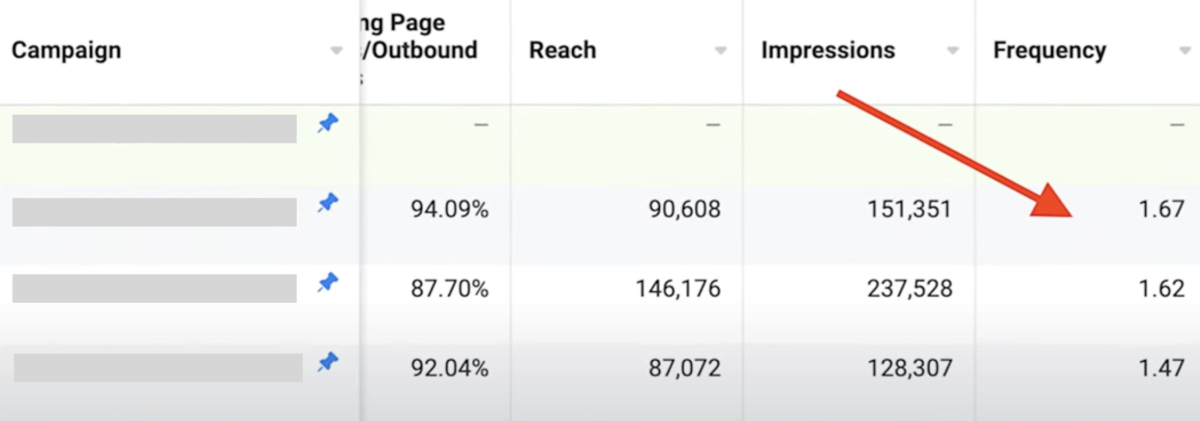
Clearly, Facebook is trying to get you conversions within every campaign you are running! Facebook used to have a feature called the Inspect Tool that showed the percentage of impressions that were being served in an ad for the first time versus those who were being hit with a second remarketing touchpoint.
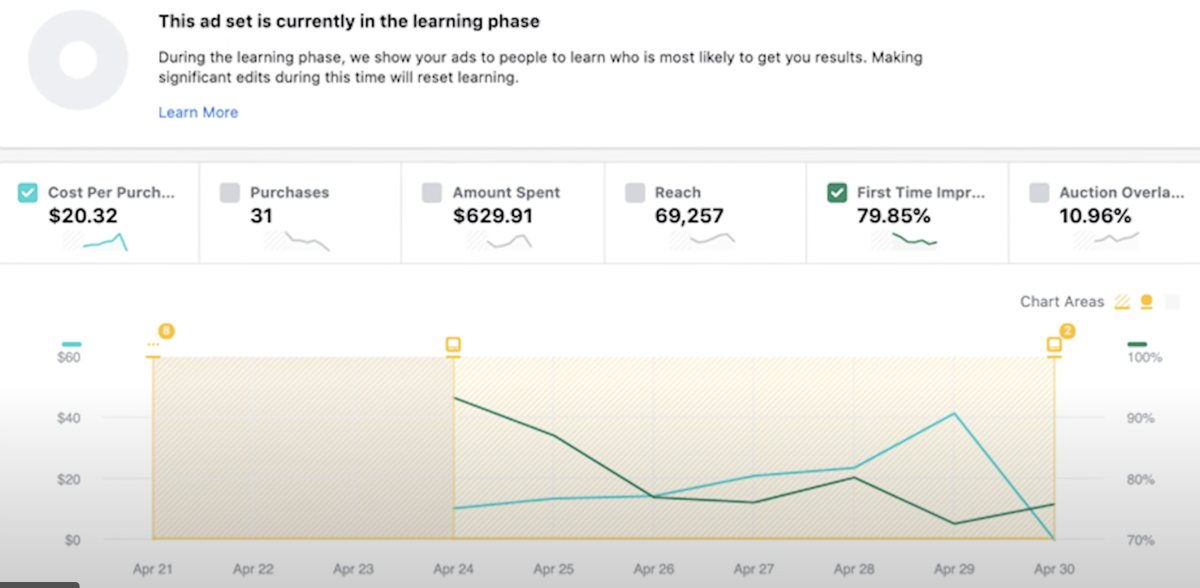
You want to ensure that your ad spend in your retargeting campaign is providing you with incremental conversions. If a customer would’ve converted without that extra retargeting touchpoint, you may be wasting your ad spend. Using broad targeting and getting it to work at your desired CPA can help you scale infinitely further than a remarketing campaign ever could.
Advantage+
Over the last couple of years, Facebook has rolled out features like Advantage+ Audience Expansion, which allows Facebook to go outside your custom targeting to find performance. Even if you’re using a retargeting audience, an interest audience or a lookalike audience, Facebook can just do whatever it wants and go outside of that audience if the algorithm thinks it’s going to find you better performance.
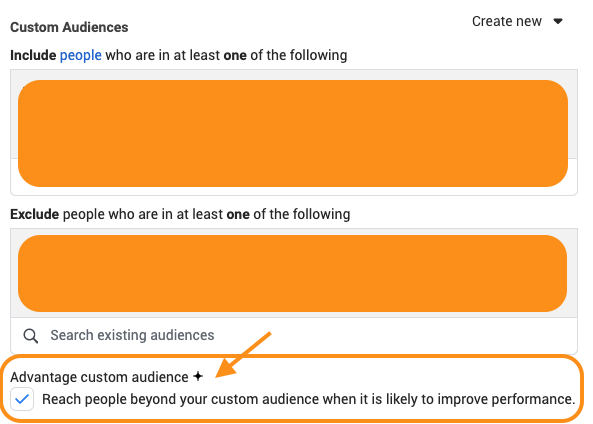
Audience Settings
Another approach to enhance audience control in your advertising campaigns, especially when using Advantage+ shopping campaigns for e-commerce, is to ensure that you are excluding purchasers in the audience settings and turning off audience expansions.
This tactic allows for greater flexibility across different funnel stages, ensuring that your conversions are not solely from existing customers. This is crucial if you have a budget cap for existing customers.
Additionally, as indicated by the term “Advantage” in the settings, you have the option to toggle off “Advantage Creative.” This feature is particularly important for brands with strict advertising guidelines. Read more about this in Facebook’s business help section.
Meta and AI
No conversation in the world of digital marketing is complete without AI. Meta is incorporating AI into its Facebook advertising campaigns.
Meta has announced significant updates to its Advantage+ and Shopping Ads, aiming to push marketer efforts in creating ads that boost consumer confidence and encourage purchases. The updates include a variety of enhancements, such as Advantage+ creative optimisations, which now allow for automatic optimisation of video ads to suit formats like Reels and mobile apps in a 9:16 aspect ratio. These optimisations also provide the capability to dynamically generate multiple ad variations tailored to individual preferences according to user behaviour.
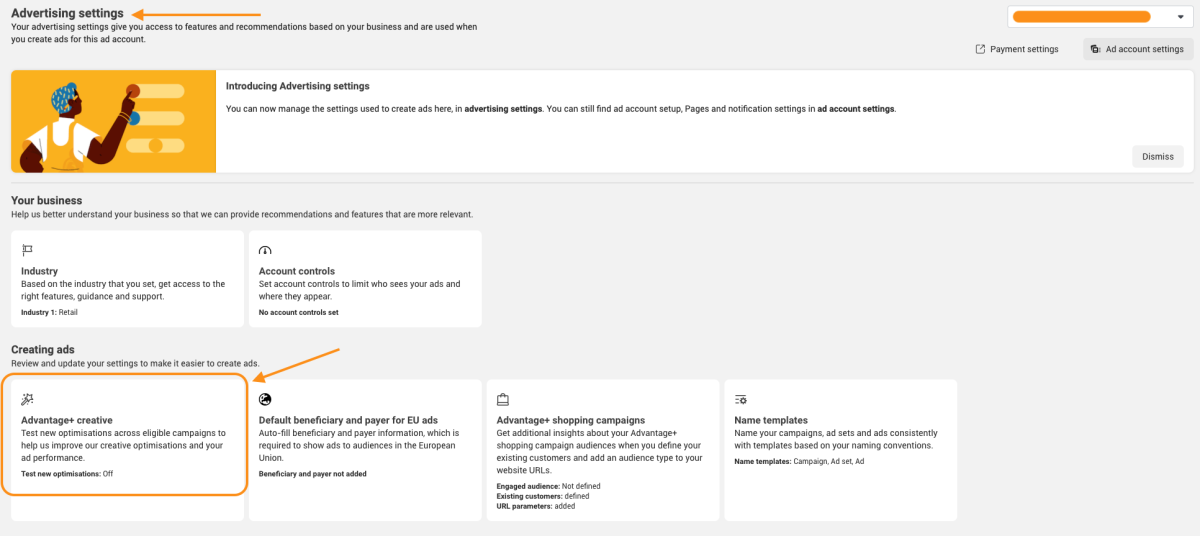
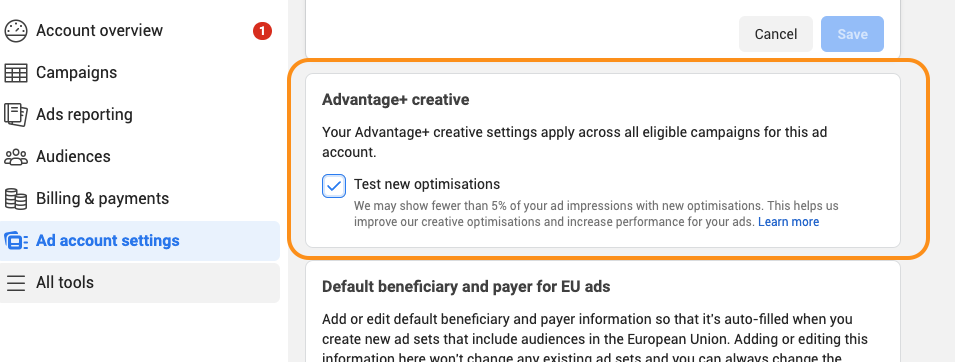
These features are available in Ads Manager. Here are a couple of key features:
- Background Generation allows the creation of multiple backgrounds to complement product images for different audiences.
- Image Expansion adjusts creative assets to fit various aspect ratios like Feed or Reels.
- Text Variations produce multiple versions of ad texts to better target audiences.
This suite of tools is part of Meta’s ongoing efforts to integrate AI-powered solutions for businesses, aimed at reducing the time and resources spent on creating and repurposing ad content.
This efficiency allows creative and media teams to focus more on strategic tasks rather than time-consuming editing. While generative AI has helped alleviate creative fatigue and speed up ad production, there is still a need for customisation to maintain each brand’s unique voice and style.
Best Facebook Ads Campaign Structure For 2024
So, what does it look like to run an ad account without retargeting? At Reform Digital’s PPC management team, our best practice for ad accounts in 2024 (some, not all) is the following:
With new campaigns, we do Campaign Budget Optimisation (CBO) to let the machine run first. With new data, we change to Ad Set Budget Optimisation (ABO) to control the budget for each ad set. We put the majority of the budget into the top-of-the-funnel campaigns, followed by middle-of-the-funnel and bottom-of-the-funnel.
In top-of-the-funnel campaigns, we focus on different audiences and do regular optimisations, especially audience optimisations. We also use dynamic or catalogue ads for remarketing, as users are already aware of the brand. Here is an example of one of our campaign structures:
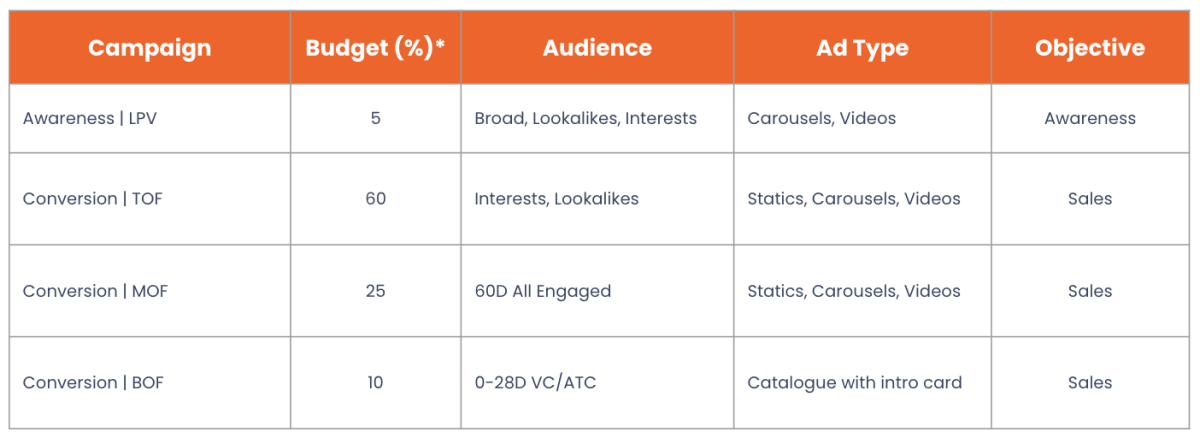
This type of campaign uses a cost cap, CBO campaign with broad targeting and the seven-day click attribution setting. Exclusions are crucial to all campaigns to avoid serving ads to customers who have converted recently. These acquisition campaigns only exclude pixel purchasers 180 days and a customer export list, excluding past purchasers, so that Facebook has the freedom to retarget within that same campaign and find the best performance.
Audience settings are key here and can be found at an ad set level. Depending on how we want to distribute the budget, we can run ABO, as it gives us more control, or CBO, which will give the machine the option to split the budget where it thinks is best. This can be applied to all your campaigns!
Don’t be afraid to have your retargeting style ads within your prospecting or acquisition campaigns. Facebook is smart and it will know to serve which ad to what user at a given time.
The Exception To The Rule!
There is one exception where you may think about using a retargeting campaign.
DPA or dynamic product ad which are ads that dynamically show users which products Facebook thinks they’re most likely to convert. These users have previously taken action on your website by adding to cart or viewing a product page. DPA can be served to new users as well! But, we typically use DPAs for retargeting as these ads can be expensive.
Make sure that you remove view view-based attribution setting for retargeting, as Facebook tends to lean very heavily on view attribution for retargeting campaigns, and that’s because most people have already viewed your products or been to your website before.
Every ad you create should try speaking to the customer where they are in their customer journey. What pain point does it solve and where does it speak to them on an emotional level?
What to learn how we can optimise your Facebook Ads to get results in 2024? Let’s chat!







